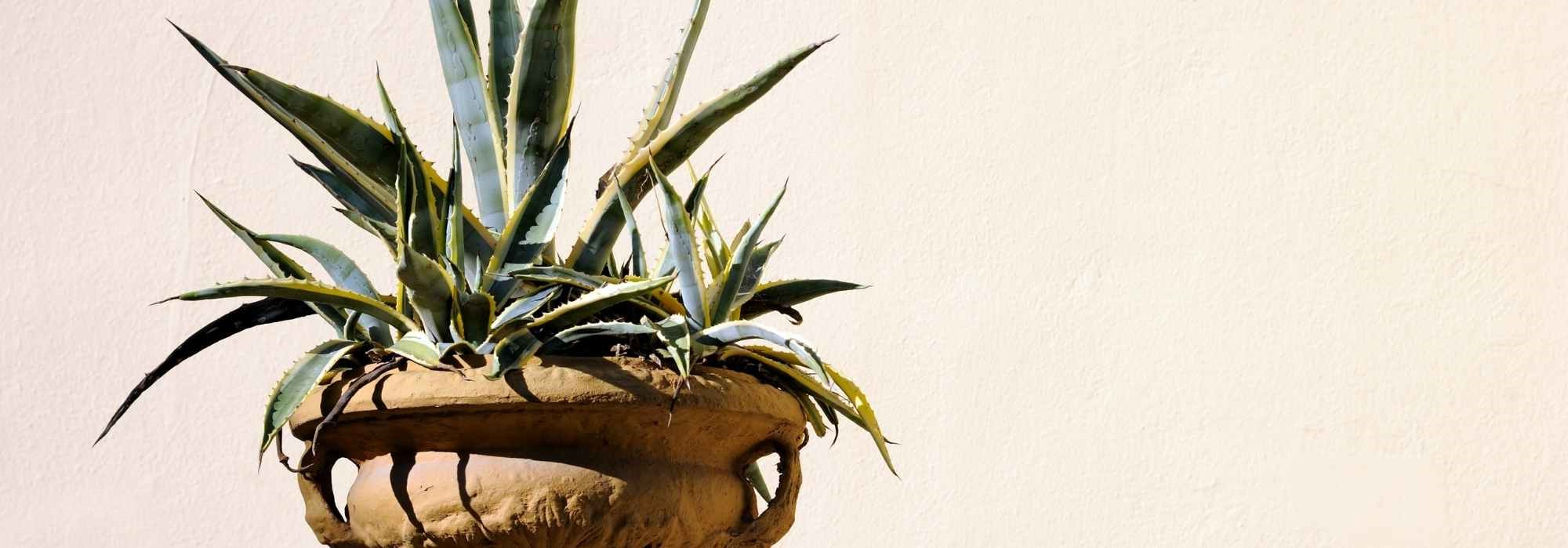
Growing an agave in a pot
On the terrace or balcony
Contents
Agave is a stunning succulent, highly valued for its monumental and remarkably graphic silhouette, much like the giant Agave americana. Native to Mexico, it is quite a frost-sensitive plant that should be grown in large pots and brought indoors during winter in regions with mild climate. Some compact varieties of agave do not exceed 40 cm in height and are well-suited for pot cultivation on a terrace or balcony, creating a desert-inspired decor!
Here are all our tips for growing agave in pots, from planting to wintering!
Which varieties to choose?
Alongside large specimens such as Agave americana, a giant that can exceed 3 m in height and spread at maturity, there are agaves with more moderate growth. For pot cultivation, opt for small and compact varieties. Here is our selection:
- Agave victoriae reginae, or Queen Victoria’s Agave, which forms a perfect ball with grey-green leaves marginate with white, reaching 50 cm in height and 40 cm in diameter at maturity
- Agave stricta ‘Nana’, a lovely dwarf form that does not exceed 30 cm in all directions, with a fairly slow growth rate
- Agave filifera, whose rosette does not exceed 50 cm in all directions
- Agave havardiana, or Havard’s Agave, which produces a rosette of dentate grey-blue leaves, well-developed at 50 cm in height and 70 cm in diameter at maturity
- Agave neomexicana forms a rosette of 70 cm resembling a large light grey-green cabbage
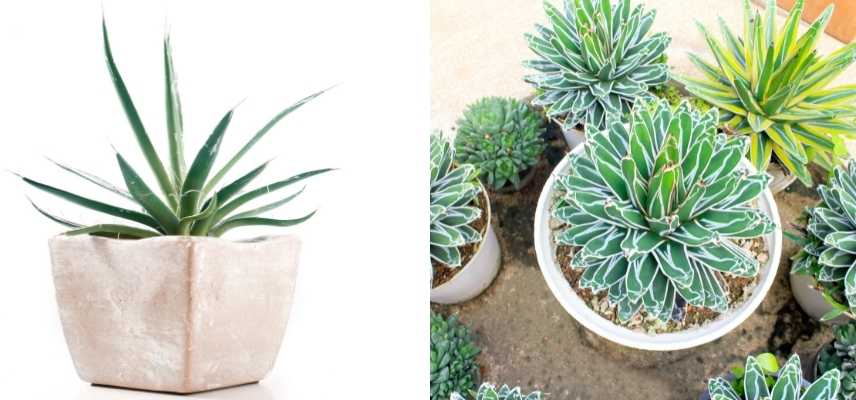
Agave filifera and Agave victoriae reginae
Read also
Agave: planting, growing, and caring forWhat pot for an agave?
For your Agave, choose a container that is at least 60 cm deep and wide. You will repot it into a larger pot as it grows. To ensure it is comfortable, you may opt for a terracotta pot for better aeration or a resin pot, which is lighter and therefore easier to move when you need to shelter it from the cold.
Always choose a pot with drainage holes to facilitate water flow and prevent stagnant moisture at the roots. Never leave water in the saucer.
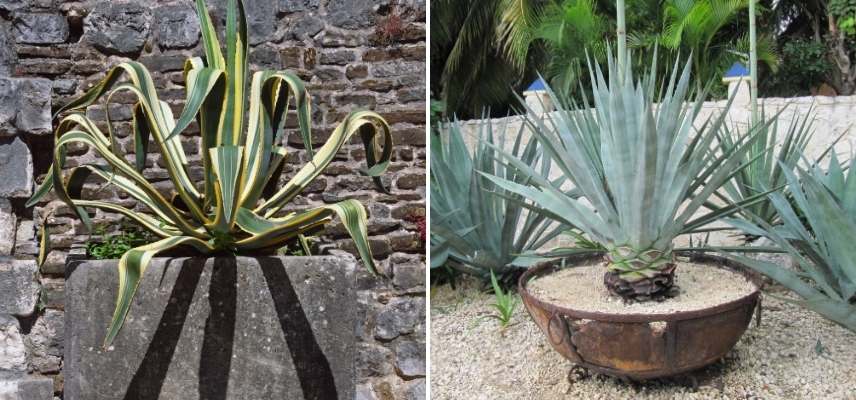
Many pots can be suitable for growing Agaves, as long as they are large enough (photo on the right © Leonora Enking)
Discover other Agave
View all →Available in 2 sizes
Available in 1 sizes
Available in 1 sizes
Available in 2 sizes
Available in 2 sizes
Available in 2 sizes
Available in 0 sizes
Available in 1 sizes
Available in 1 sizes
Available in 1 sizes
What type of substrate to use?
The substrate must be very draining to prevent root rot. Agave does not tolerate excess moisture well. Drainage must be particularly careful. Plant your agave in a filtering mix composed of 50% potting soil and 50% clay balls or pouzzolana or a light substrate such as “cactus potting soil.”
Read also
Choosing an agaveWhen and how to plant an agave in a pot?
Planting an agave in a pot is preferably done in spring.
- Place a piece of terracotta at the bottom of your pot to prevent the substrate from escaping.
- Spread a good layer of 5-10 cm of gravel or clay balls to avoid excess moisture.
- Plant the root ball in the centre of the container, then fill in with the substrate without burying the collar, so that it is level with 2 cm below the rim of the pot.
- Gently press down with your hands.
- Water generously.
- Mulch with a layer of gravel or pebbles to limit evaporation and insulate the collar from rot.
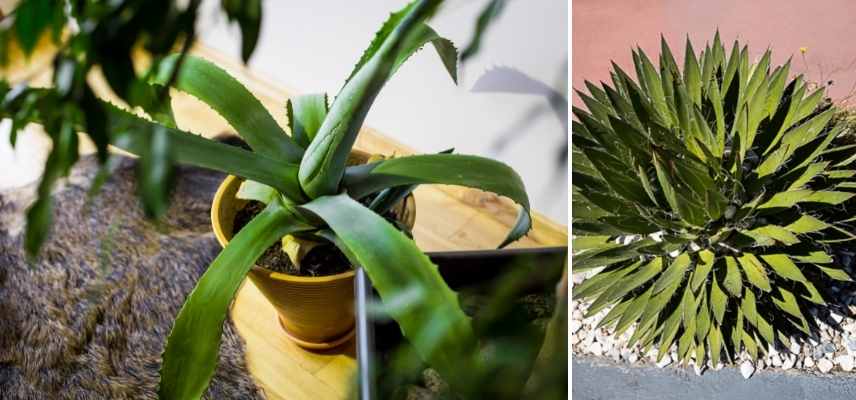
Which exposure to choose?
Agave loves sun and heat, place it in full sun, in the warmest spot on your terrace, sheltered from cold drafts. It can withstand very high temperatures. Wait until frosts are definitely over before moving your pot onto the terrace or balcony.
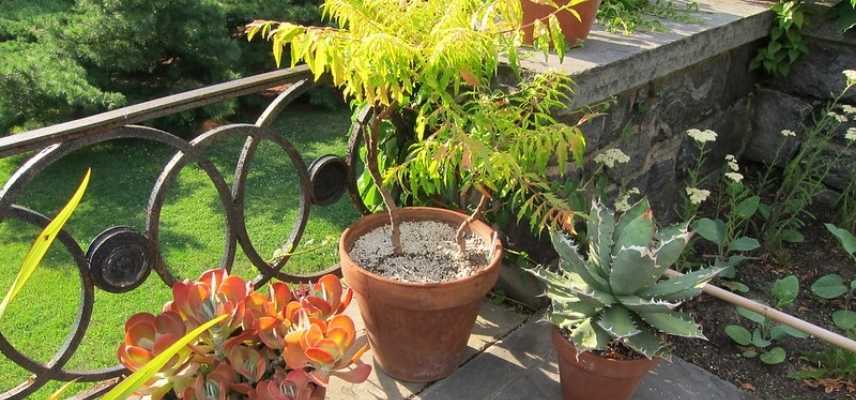
Move your potted Agave to the balcony as soon as temperatures allow (© KM)
How to care for potted agave?
Watering
A potted agave will require more attention regarding watering than a plant in the ground. The substrate tends to dry out more quickly. However, it is a desert plant, so it is not very water-hungry. Excess water could cause it to wither. To prevent the substrate from drying out too quickly, we recommend mulching around the base to retain moisture during summer.
- Throughout the growing season, water regularly, about once a week, no more. Always allow the soil to dry out between waterings.
- In winter, reduce watering, keeping it almost dry.
Fertilisation
In pots, the substrate depletes more quickly than in the ground. You can apply a low-nitrogen fertiliser, such as “cactus special”, 3 to 4 times during the summer period. Dilute it in the watering water.
Repotting
The Agave can be repotted every 2 to 3 years to completely renew its substrate.
What to do with my potted agave in winter?
Wintering
Potted plants are more vulnerable to the cold. Generally moderately hardy, Agave is easy to grow in the ground in gardens spared from severe frosts; in colder regions, it should be grown in large pots and stored away from frost and moisture during winter.
- In warm regions, place the pot out of reach of winter rains.
- Elsewhere, bring the pot inside before the first frosts. Position the pot in a very bright, airy, and cool room, such as a conservatory or cold greenhouse.
- Before taking your plant outside again, give it a little clean-up at the end of winter: wear gloves and use pruning shears to tidy up the old foliage, cutting back any black or damaged leaves.
- As soon as the risk of frost has passed, you can gradually acclimatise your plant to the sun to prevent the foliage from burning irreparably. Proceed in stages. To do this, keep the pot in partial shade for 2 to 3 weeks before exposing it to full sun. Your agave can remain outside from April-May to October.
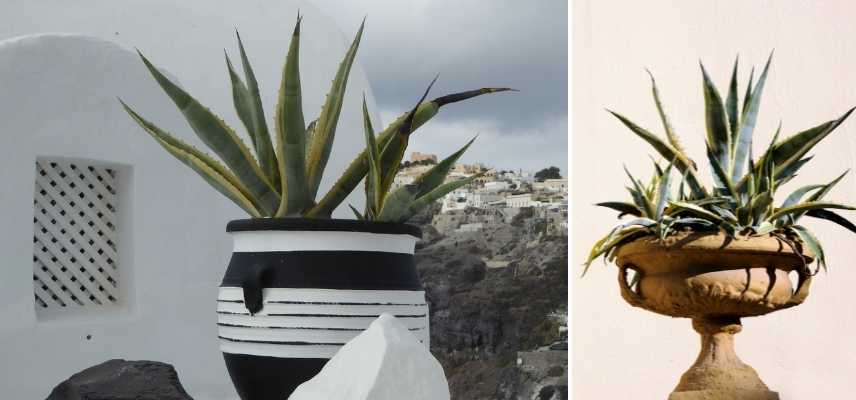
Stunning Agaves… with proper care, you can grow them outdoors in pots (© Gwenaëlle David)
→ Learn more in our advice sheet: how to winter an agave?
To go further
- Find our collection of agaves
- To learn everything, discover our complete guide: “Agave: to plant, to grow and to maintain”
- Subscribe!
- Contents
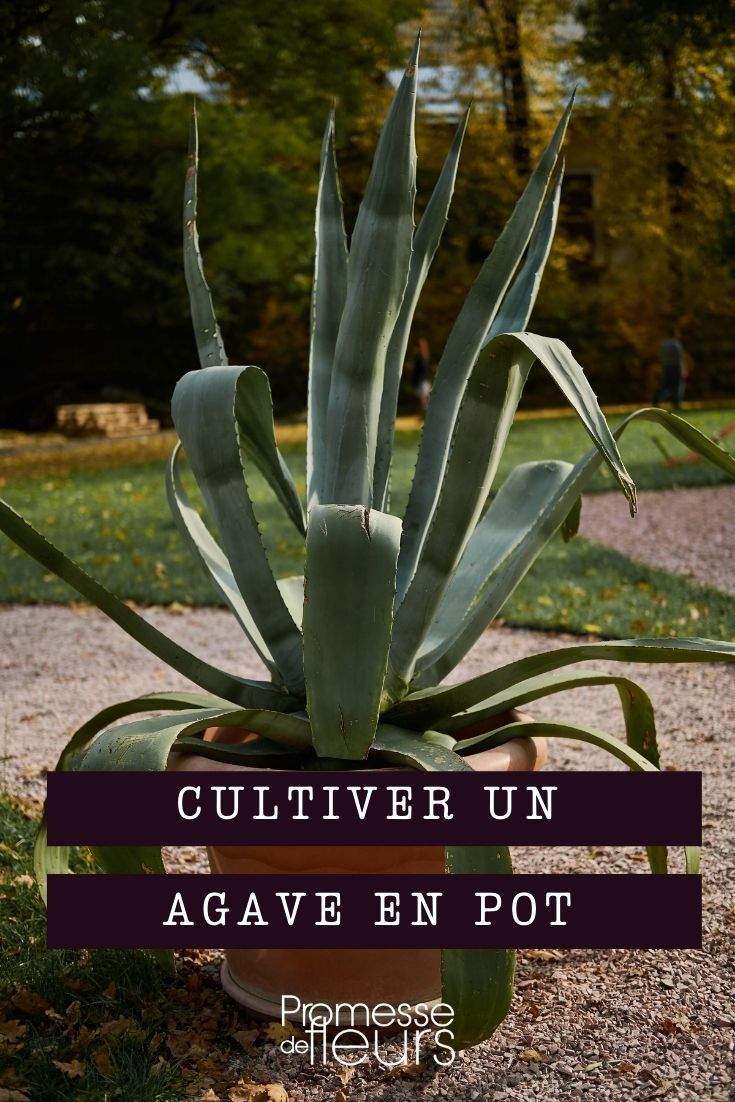































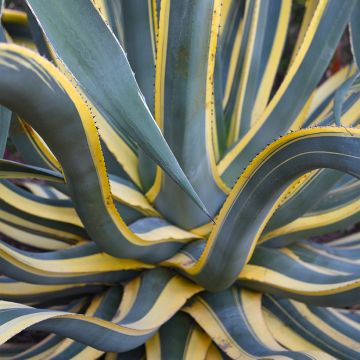
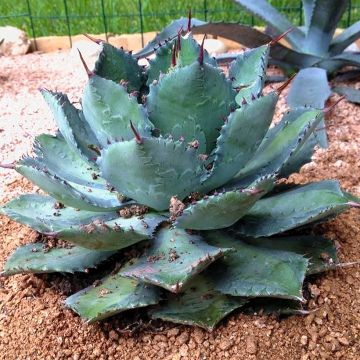
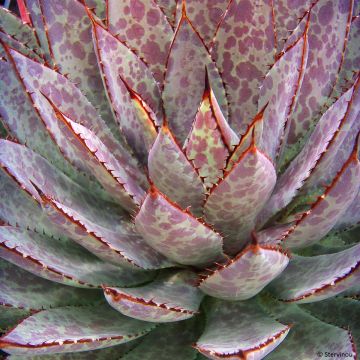
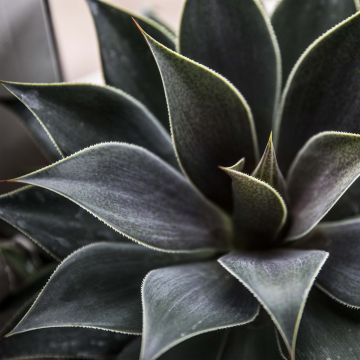
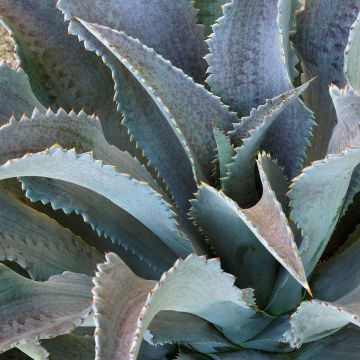
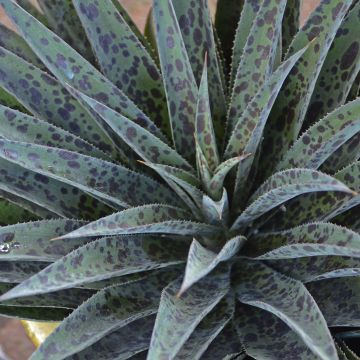
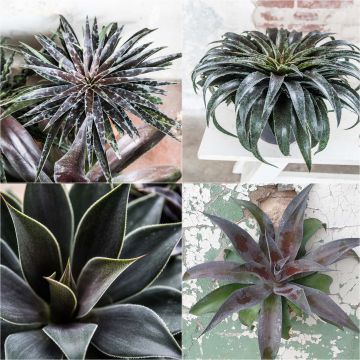
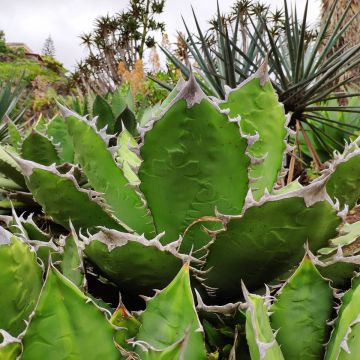
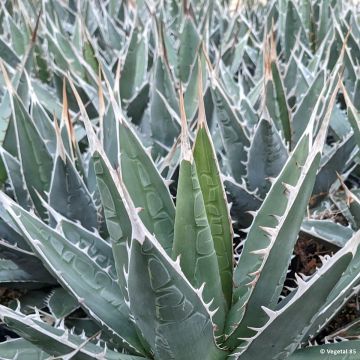
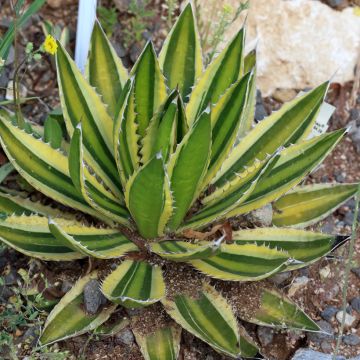
Comments